




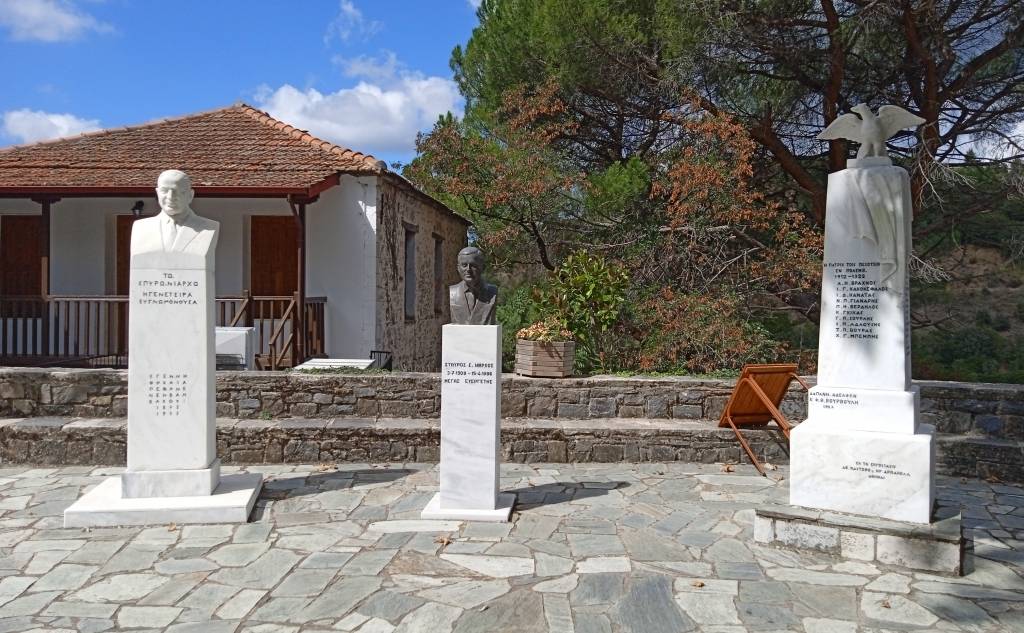
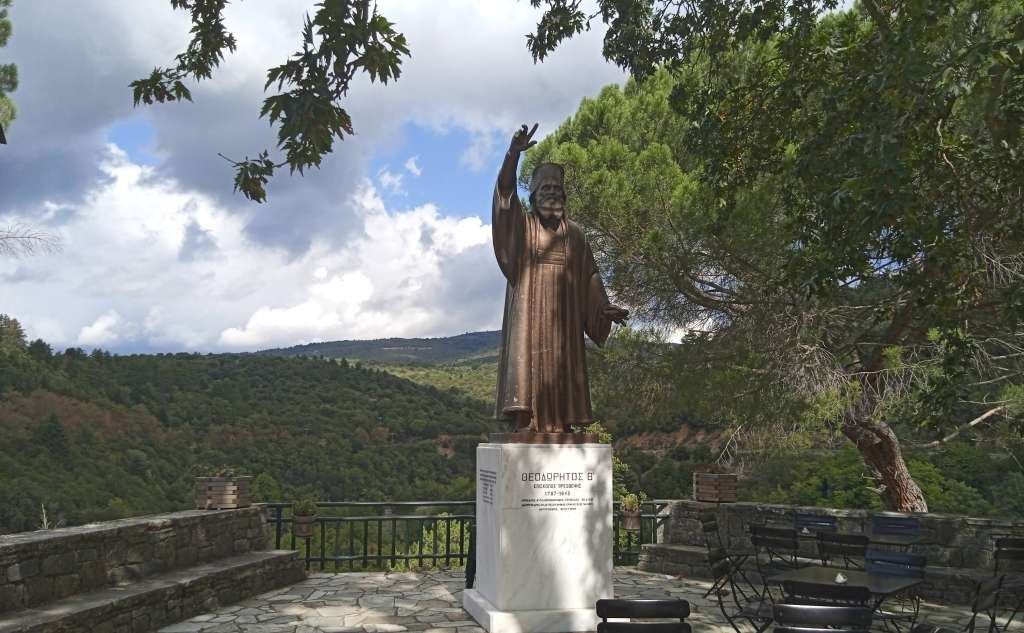
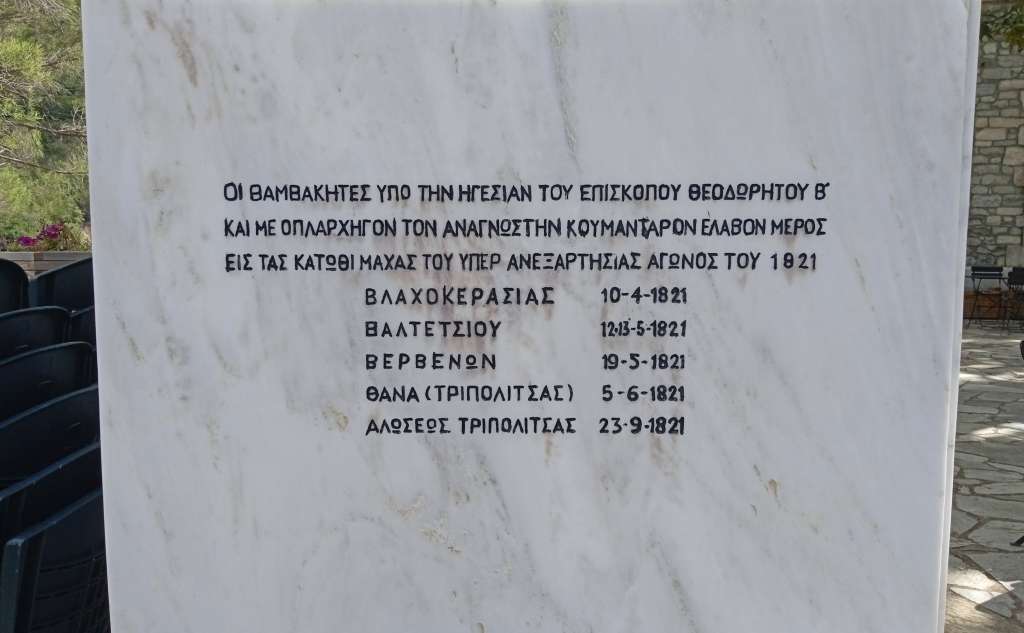
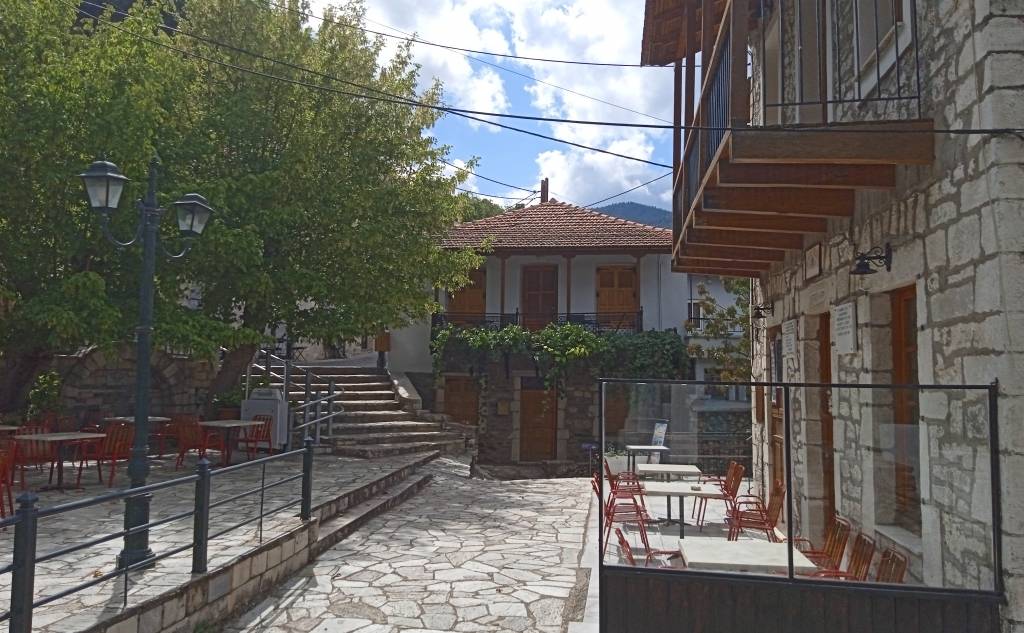
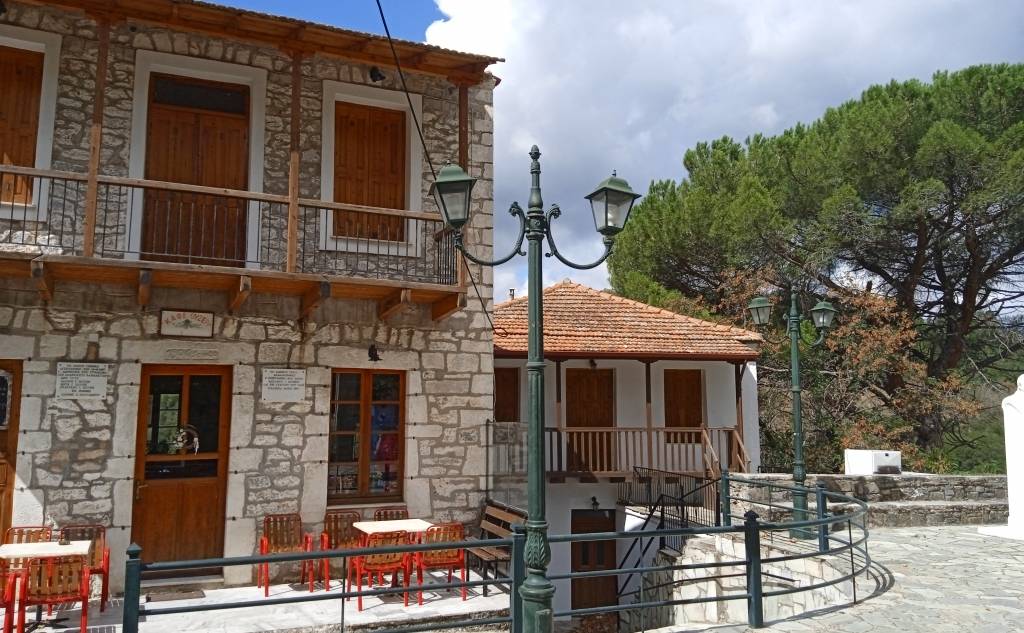


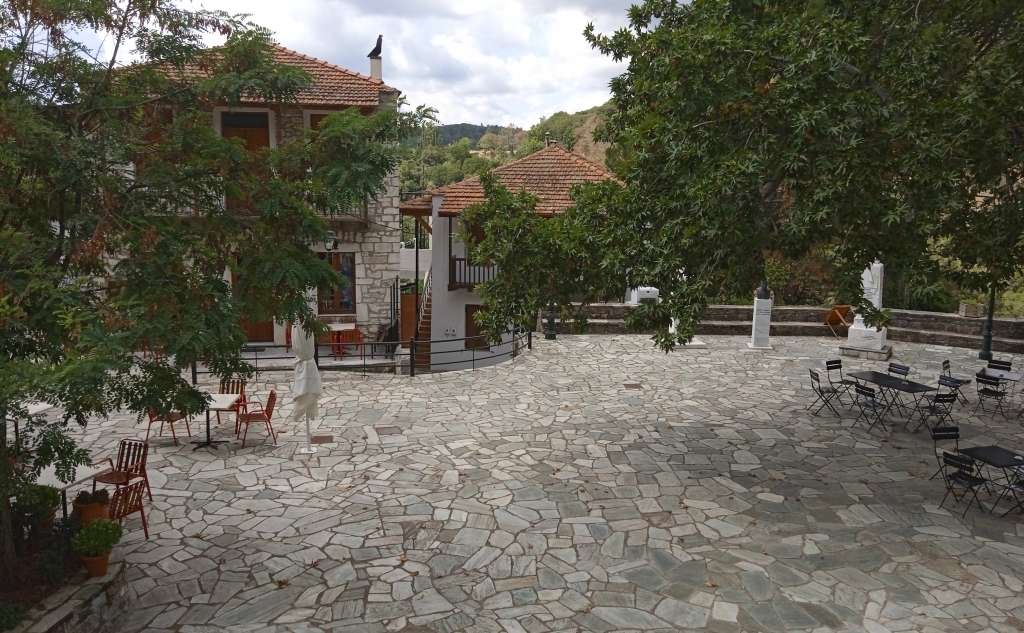
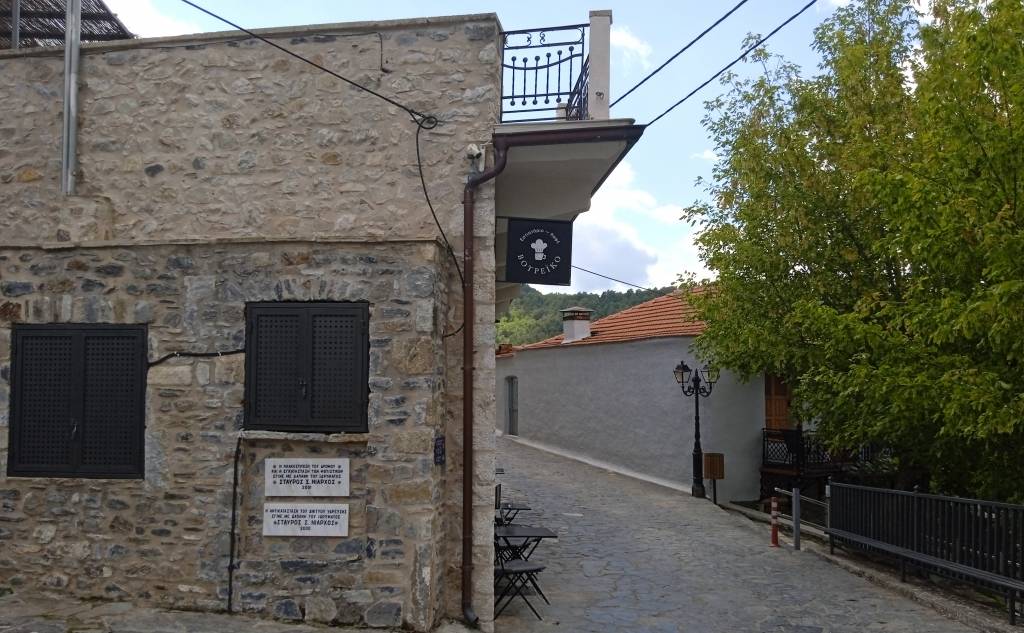
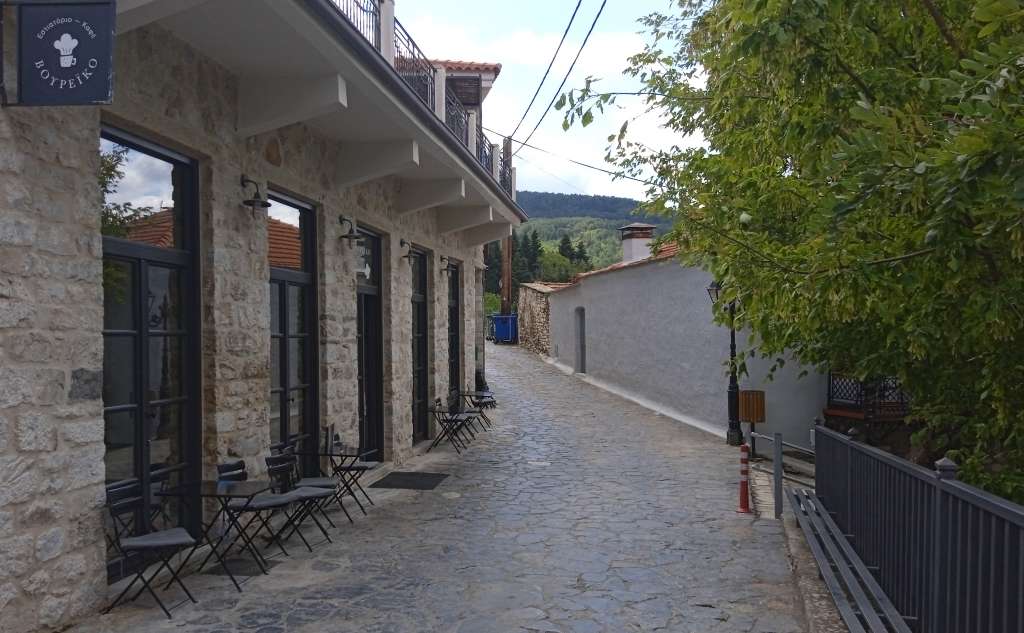
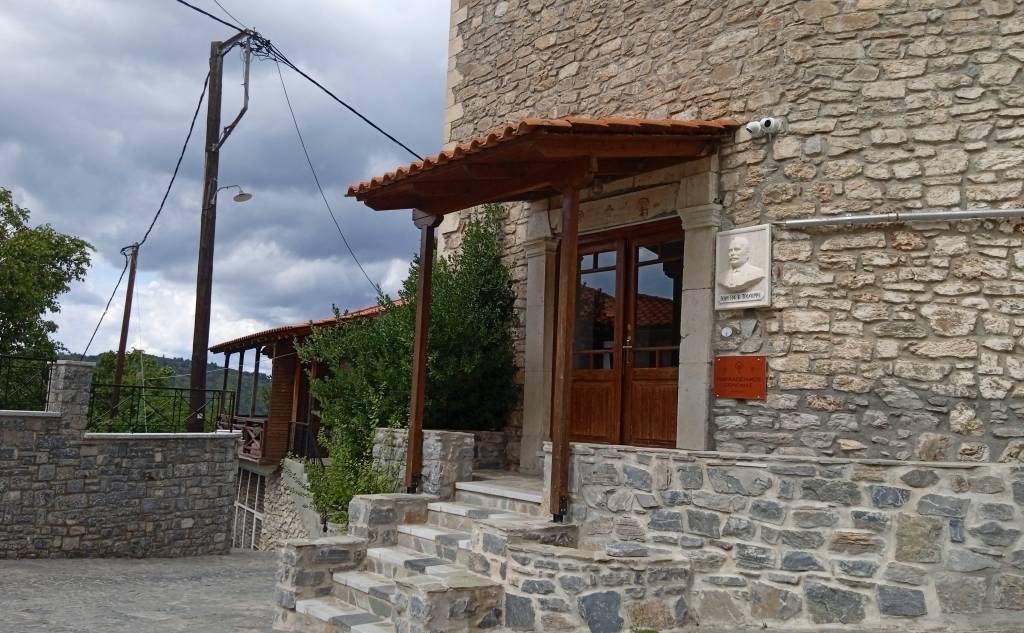
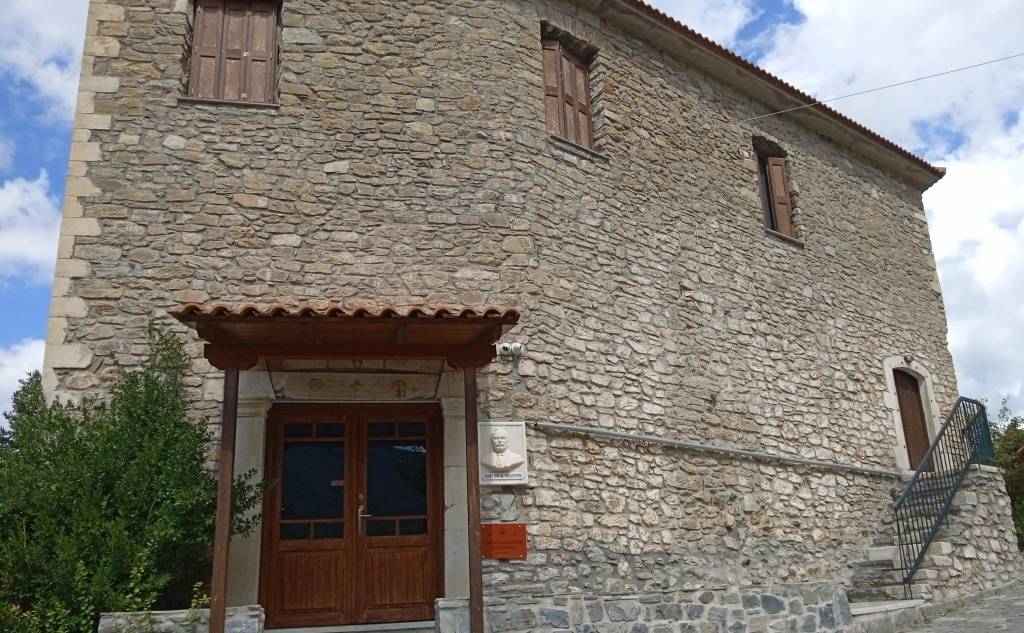
The mountain village of Vamvakou, with its extraordinary natural beauty and long history, is located shortly after Karyes and Varvitsa. It is built at an altitude of 900 metres on the west side of the highest peak of Mount Parnon ("Cronius" according to Hesiod), northeast of Sparta. The village was built in the middle of the 15th century and was initially called Paliochora. The current name of the village was established at the end of the 17th century. It is said that it got its name from cotton cultivation or from a woman named Vamvakia, who settled in the area coming from Mystras.
During the Greek Revolution, the inhabitants of Vamvakou (led by Bishop Theodore Vresthenis) participated in the battles of Vlachokerasia, Valtetsi, Doliana and others. In 1826, Vamvakou was destroyed by the Egyptian army of Ibrahim Pasha. When the Turks occupied the Peloponnese, it was divided into 24 provinces called "kazadas". Vamvakou belonged to the Mystras Kazada (hence the Byzantine connection between the two regions). The struggles of the people of Vamvakou continued after 1821, and their action in the wars between 1912-1922 was enormous. Specifically, 22 dead people are listed on the Hero monument of the village. The number was "tougher" during the Occupation by the Germans and the Civil War. On October 9th, 1946, in the centre of the village, 28 residents were executed. The village experienced notable development at the beginning of the 20th century, while the demographic collapse occurred gradually due to the Occupation, the Civil War, immigration and urbanisation. A few decades ago, the village had hundreds of inhabitants, while there are only eleven today.
Panagis Alexandrakis, the monk Klimis Adamantidis and the Koumandaros and Exarchos families(who actively participated in the Greek Revolution) come from Vamvakou. Also, shipowner Stavros Niarchos and businesswoman Dolly Goulandris came from the village.
Since August 2018, five people (Haris Vasilakos, Anargyros Verdilos, Eleni Mami, Tassos Markos and Panagiotis Soulimiotis) founded the cooperative social company called "Vamvakou Revival", with the aim of developing the village and returning permanent residents to it. Morally and financially, at their side is the Stavros Niarchos Foundation (ISN).
At the green village with the endless forest (overgrown with walnuts, chestnuts and plane trees), visitors can wander the picturesque alleys and see the old and the new school, the imposing clock and the "Station of Emotions", so named because it was the place from where the fleeing of the people of Vamvakou began (which led to the desolation of the village). For nature lovers, there are two shelters in the village. The first is the shelter at "Avrialou" (at an altitude of 1484 metres), and the second is the shelter at "Arnomousga" (at an altitude of 1420 metres). Also, at Vamvakou, there is an excellent, traditional guest house, which is full of visitors almost every weekend (especially in winter).
At the picturesque square of Prophet Elias, with the huge plane tree, the acacias and the traditional cafe, the visitor can find the Hero monument and the busts of Klimis, Spyros and Stavros Niarchos. Inside the village, hidden in corners, there are signs with lyrics written by famous poets and storytellers. In fact, the Poetry and Fairy Tales Academy has transformed an entire building into a fairytale house where storytelling, performances and other events take place. At Kato Vrysi (at the lowest point of the village), the visitor can see the stone fountains with the running, crystal clear water.
At Vamvakou (known for its honey, aromatic tea and oregano), there are several churches, such as Saint - Agia Triada and Agios Georgios (built in 1000-1100 AD), and The Assumption of the Virgin Mary. The original church was built in 1760. It was destroyed during the invasion of Ibrahim in 1826 and finally demolished in 1898. The village's central church is dedicated to three Saints - a rare thing to see. It is dedicated to the Assumption of the Virgin Mary, Saint Panteleimon and Saint Charalambos. The bronze statue of Theodoritos II, bishop of Vresthenes, is placed in its precinct.
Nearby the village, you can find the cave monastery of Saint - Agia Kyriaki, which has been declared a historical monument. The cave monastery is built in the hollow of a rock in a location of extraordinary natural beauty. According to tradition, the shepherds who grazed their animals in the area at night saw a light near the monastery, which disappeared in the morning. When they arrived there, they found the icon of Agia Kyriaki in a hole, and so they built the monastery in her honour. Evidence reveals the existence of the abbey around 1800. Finally, Saint – Agia Kyriaki was the focal point, the location of important historical events: The Turks demolished the monastery with cannons placed at Vagenas. Also, during the Turkish occupation, the people of Vamvakou hid their valuables in the fig tree that existed there and in the holes of rocks. A characteristic figure was Daniel Katsiris, who built the well-known cell, which is located above and to the right of the cave monastery.